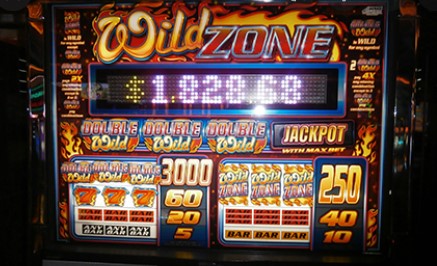The Blancs also understood another thing: Europe has many thermal sources, and they must offer something that is not available elsewhere. So they opened a new casino with roulette in Brunnensalchen on 23rd May 1841.
Specialists say that poker, blackjack, and many other gambling games are not games of chance in the truest sense. With the right skill, a player can win even if a deal is not very successful. It is quite another story with roulette. It is both Luck AND Chance and is represented in “The Wheel of Fortune.” Each number has a slot for its respective numbers. These numbers are located in a particular and almost magical order: “red and black,” “equal odds,” “straight-up,” and “split.” These words were only becoming popular, and the green cloth was not yet a familiar name.
Although the new casino was top-rated, politics intervened. Bad Homburg received a “New Year’s present” on the 31st December 1872: Gambling was banned in all of the North German Union territories created in 1867. Bad Homburg was still a popular spa resort, but it lost its “devil flame.”
The Blancs were difficult to dissuade. Francois Blanc saw it as a sign that Baden-Baden’s casino was closing. He said that if the well-to-do German burgers don’t like his invention, it is time for them to search for a reserve airfield. So he purchased a license in 1863 to operate in a small casino in Monaco. The family relocated to Cote d’-Azur after he had to close Bad Homburg’s gambling house. They soon opened a new casino in Monte Carlo, which is still in existence.
The arrival of the “one-armed bandit.”
Gambling became very popular in New World, as was predicted. People who couldn’t take risks and didn’t want to risk them were not required to travel beyond the oceans. Those who could not afford to do so would not be able to make it here. All the rest desired risk and hazard. Many countries’ economists would later admit that while we can praise the virtues, the most profitable business model is built on bad habits. If such business is legal, it’s a “golden goose.” However, Americans soon realized huge profits from roulette, and many saloons in Wild West were able to capitalize on this attractive novelty.
But They soon revealed another truth: The business can only grow if it has a small customer. Because roulette was more famous as entertainment for the wealthy than for the commoner, They created its equivalent for the less fortunate. Half a century later, the roulette was replaced by significant innovation in the gambling industry: American Charles Fey presented his invention with the rather pompous title “Liberty Bell” in 1895. This machine featured three spinning reels fixed to the horizontal ax and activated with the lever. There were figures on the reels. A player would insert a coin into the slot then pull a handle (or arm) to turn the wheels. The player who matched a particular combination was awarded a prize.
The invention did not naturally take the name, and it was to be known as “one-armed bandit.” It had to overcome many hurdles, just like roulette. With stiffening American gambling legislation, slot machines needed to be adjusted to sell chewing gum. You will find pineapples, plums, cherries, lemons, mint, and other items on those old slot machines, but gambling passion remained the most prominent. Las Vegas, the “gambling capital of the world,” was the perfect place to witness it.
The Blancs, true visionaries in the realm of gambling, possessed an innate understanding of the need to offer something exceptional amid Europe’s abundant thermal springs. This visionary insight led them to embark on a groundbreaking venture – the inauguration of a pioneering casino featuring roulette in Brunnensalchen on that fateful day of May 23, 1841.
While many contend that games such as poker and blackjack involve elements of skill and strategy, roulette stands as a unique amalgamation of both chance and fortune. Often hailed as “The Wheel of Fortune,” each number on the wheel occupies a place in a nearly mystical arrangement. Terminology like “red and black,” “equal odds,” “straight-up,” and “split” was just beginning to weave itself into the lexicon, and the iconic green cloth had yet to become synonymous with this captivating game.
Despite the initial triumph of this novel casino venture, the arena of politics soon cast its imposing shadow. On the ominous date of December 31, 1872, gambling met its untimely demise across all territories of the North German Union, including the once-thriving Bad Homburg. The vibrant gambling hub suddenly found itself shrouded in darkness, bereft of its formerly blazing “devil flame.”
Nevertheless, the indomitable Blancs were not so easily deterred by these political machinations. In the eyes of Francois Blanc, this setback served as a portentous sign that Baden-Baden’s casino was closing its doors to the winds of innovation. In response, he boldly declared that if the affluent German bourgeoisie failed to appreciate his ingenious creation, then perhaps it was high time for them to seek alternative pursuits. In the year 1863, he shrewdly secured a license to operate a petite casino in the picturesque enclave of Monaco. Alongside his intrepid family, he embarked on a journey that led them to the enchanting landscapes of the Cote d’-Azur, leaving behind the echoes of Bad Homburg’s once-thriving gambling establishment. In a remarkably short span of time, they unveiled yet another masterpiece – a novel casino that continues to thrive in Monte Carlo to this day.
The advent of the “one-armed bandit” marked a significant epoch in the annals of gambling history. As foreseen, gambling found fertile soil in the New World, extending its embrace to those who could not undertake arduous journeys across vast oceans in pursuit of entertainment. However, the true revelation lay in the understanding that for the gambling industry to reach its zenith, it needed to cast a wider net. Roulette had long been synonymous with the elite, thus necessitating the creation of a more inclusive counterpart.
Half a century later, the gambling world bore witness to a groundbreaking innovation – Charles Fey’s “Liberty Bell” of 1895. This contraption featured three spinning reels affixed to a horizontal axis, brought to life with the simple pull of a lever. Adorned with symbols, players would insert a coin, grasp the lever, and fervently hope for the alignment of a winning combination. This invention would go on to serve as the precursor to the iconic “one-armed bandit.”
Yet, akin to the journey of roulette, slot machines encountered their fair share of challenges, particularly with the evolving landscape of American gambling legislation. In order to navigate these legal obstacles, slot machines ingeniously adopted the practice of dispensing chewing gum as a form of reward. The symbols on these early slot machines ranged from pineapples to plums, cherries to lemons, and mint leaves, yet beneath the surface, the unquenchable thirst for the thrill of gambling remained unaltered.
Las Vegas, the illustrious “gambling capital of the world,” emerged as the perfect canvas upon which the evolving narrative of the “one-armed bandit” and its enduring allure would be painted.

